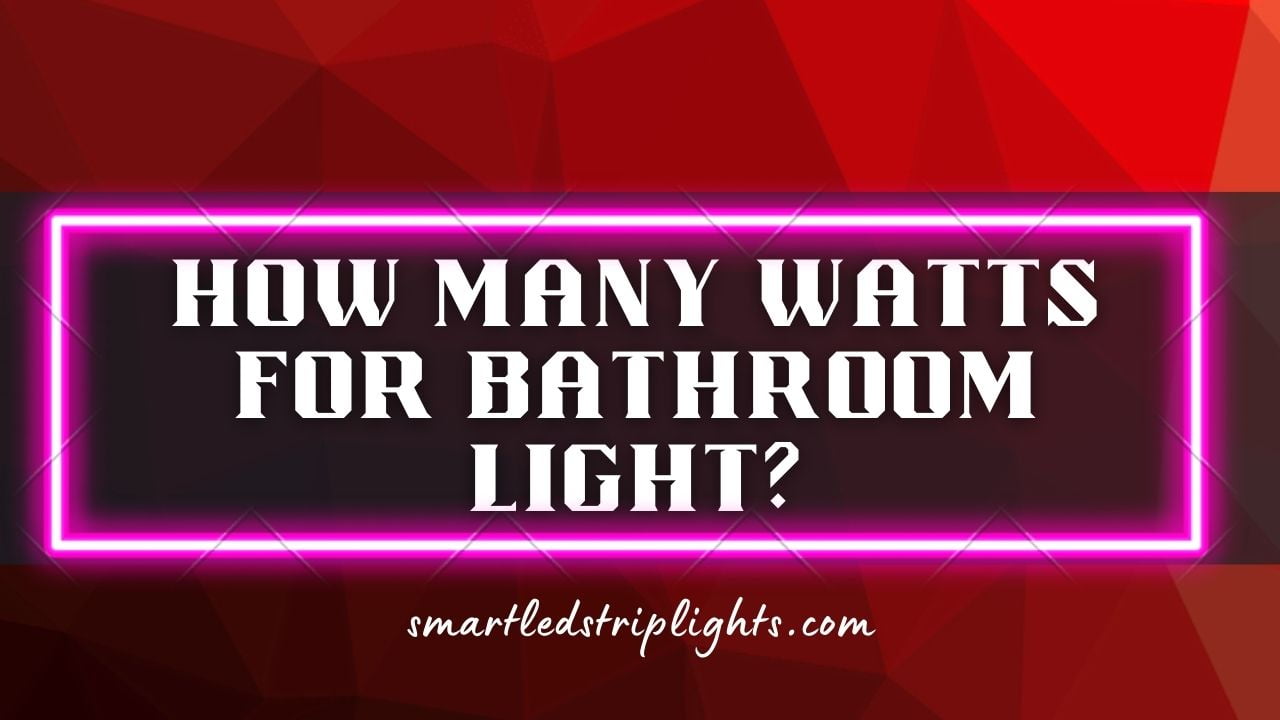Bathroom Lighting Basics

Recommended wattage for bathroom lighting – Lighting plays a crucial role in creating a functional and aesthetically pleasing bathroom. It helps with daily tasks, sets the mood, and enhances the overall ambiance. Various types of lighting serve different purposes in a bathroom, and it’s essential to consider natural light sources when planning your lighting scheme.
When selecting bathroom lighting, the recommended wattage plays a crucial role in creating the desired ambiance. For optimal illumination, opt for a wattage between 75 and 100 watts for each vanity light. If you’re looking to replace your bathroom vanity lights, consider referring to our comprehensive guide on how to replace bathroom vanity lights.
Once you’ve replaced the lights, ensure the wattage is appropriate for the size of your bathroom and the level of brightness you prefer.
Types of Bathroom Lighting
- Ambient Lighting: Provides general illumination throughout the bathroom, creating a comfortable and evenly lit space. It can come from ceiling fixtures, recessed lighting, or wall sconces.
- Task Lighting: Focuses light on specific areas where tasks are performed, such as the mirror, shower, or bathtub. It’s essential for activities like shaving, applying makeup, or reading.
- Accent Lighting: Highlights architectural features or decorative elements, adding depth and visual interest to the bathroom. It can come from recessed lighting, under-cabinet lighting, or wall-mounted fixtures.
Natural Light
Natural light is an important factor to consider when planning bathroom lighting. It can reduce energy consumption and provide a more natural and inviting ambiance. If possible, position the bathroom to take advantage of natural light from windows or skylights. This can help reduce the need for artificial lighting during the day.
Recommended Wattage for Bathroom Lighting

Determining the appropriate wattage for bathroom lighting is crucial to ensure optimal illumination and a comfortable ambiance. Various factors, such as room size, ceiling height, and the specific areas being lit, influence the recommended wattage.
To provide guidance, we have compiled a table outlining the recommended wattage for different bathroom areas:
Vanity Lighting
Vanity lighting, which illuminates the area where you perform grooming tasks, typically requires higher wattage to provide ample light for precise activities like shaving or applying makeup. For a standard-sized vanity, a total wattage of 1,000-1,500 lumens is recommended.
Shower Lighting
Shower lighting should be waterproof and provide adequate illumination without creating glare or shadows. For a standard-sized shower, a wattage of 75-100 watts is generally sufficient.
General Lighting
General lighting provides overall illumination for the bathroom. For a standard-sized bathroom, a wattage of 500-750 lumens is recommended. It’s important to consider the ceiling height when choosing the wattage; higher ceilings may require higher wattage to achieve the desired brightness.
Benefits of Dimmable Lighting, Recommended wattage for bathroom lighting
Dimmable lighting offers versatility and energy efficiency. By adjusting the brightness, you can create different moods and ambiance in the bathroom. For example, you can use brighter lighting for tasks like grooming and softer lighting for relaxation.
Energy-Efficient Bathroom Lighting: Recommended Wattage For Bathroom Lighting

Incorporating energy-efficient lighting into your bathroom offers numerous advantages. These lighting solutions not only reduce energy consumption but also provide cost savings and environmental benefits.
When selecting energy-efficient light bulbs for your bathroom, consider the following tips:
- Choose LED Bulbs: LED bulbs consume significantly less energy than traditional incandescent or halogen bulbs while providing comparable brightness.
- Consider CFL Bulbs: Compact fluorescent lamps (CFLs) are another energy-efficient option that use less energy than incandescent bulbs but may contain mercury.
- Look for Energy Star Certification: The Energy Star label indicates that a light bulb meets specific energy-efficiency standards set by the U.S. Environmental Protection Agency (EPA).
Potential Cost Savings
Energy-efficient lighting can lead to significant cost savings over time. LED bulbs, for example, have a longer lifespan than traditional bulbs, reducing the frequency of bulb replacements. Additionally, their lower energy consumption results in reduced electricity bills.
When designing your bathroom, lighting is crucial. The recommended wattage for bathroom lighting varies depending on the size and layout of the room. For a small bathroom, 100 watts may be sufficient, while a larger bathroom may require up to 200 watts.
To add a touch of style to your bathroom, consider incorporating a decoration stand. This can provide a place to display plants, candles, or other decorative items, while also adding a bit of extra storage space. By choosing the right wattage and incorporating stylish elements, you can create a bathroom that is both functional and beautiful.